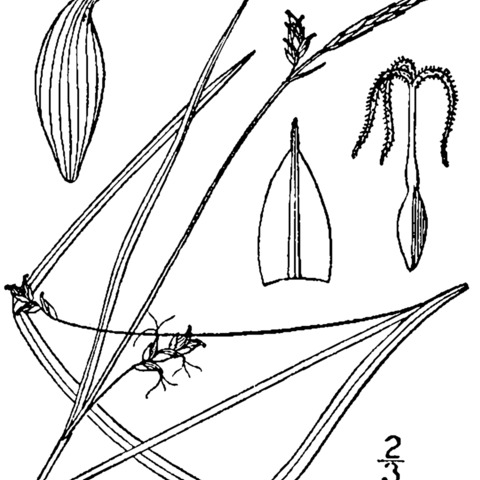Plants 3–8 dm, forming large tufts; fertile stems lax or ascending, sharply triangular but not winged, minutely roughened above; basal sheaths ± brown; largest lvs to 7 mm wide, seldom more; terminal spike staminate, 1–3.5 cm, its peduncle usually and its summit always surpassing the short (ca 5 mm), sessile, uppermost pistillate spike; pistillate spikes 2–5, 0.5–2 cm, widely separated but none basal, the lowest on a long, drooping peduncle, the upper on short, scarcely exserted peduncles; pistillate scales acute to acuminate; perigynia 4–20, closely overlapping, greenish-stramineous, 3.5–5.5 mm, finely many-nerved as well as 2-ribbed, obtusely trigonous, fusiform, long tapering to both ends, the elongate but ill-defined beak somewhat outcurved, with an oblique, entire orifice; achene trigonous; 2n=48. Wet woods and bogs, often in sandy or silty soil; Conn. to Fla., w. to s. O., Ky., Tenn., La., and se. Tex.

